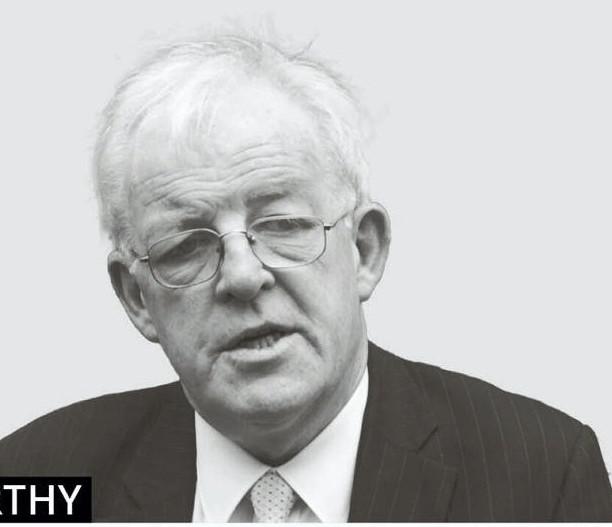Ireland’s peripheral location on the Atlantic edge of Europe imposes costs for a trading economy but also saves public expenditure on the military. At under 0.3% of GDP, defence spending is the lowest in the EU, and the current debate about military neutrality has paid too little attention to the financial savings the country has enjoyed. There is an unheralded dividend of geographical remoteness to set against the handicaps.
The amounts involved are substantial. Some smaller EU members with a comparable population and national income spend far above the Irish figure on military equipment and personnel. The EU average, relative to GDP, is 1.3% – almost five times the Irish percentage and rising.
NATO
Countries that are members of NATO are expected to spend around 2% of GDP on defence and several do so. There have been applications from formerly neutral countries for NATO membership since Russia invaded Ukraine, and the EU is developing an enhanced capability in defence and security that would embrace non-NATO member states too. Ireland can stay out of NATO, but will be expected to meet any EU obligations that emerge.
Ireland’s figures for GDP are exaggerated by the multinational sector. The Central Statistics Office (CSO) has developed a lower and more realistic estimate of available national resources. Defence spending for 2023 has been increased to around €1.2bn. If Ireland were to join NATO and attain the target 2% for defence spending, this would increase to at least €5bn if the CSO’s modified figure were to be used – and even higher if the distorted GDP basis were employed. The price tag for abandoning Irish neutrality is therefore a minimum of around €4bn per annum and could be more.
In choosing to abandon its traditional neutrality, Finland, with its population of 5.6 million versus Ireland’s 5.1 million, has accepted that NATO membership implies close to a doubling of its defence budget (already well ahead of the Irish figure). Denmark, with a population of 5.9 million, is also comparable to Ireland and has been a NATO ally since 1949, but imposes some limits on full participation. No nuclear weapons are stationed on Danish territory, for example. Denmark also spends far more on defence than Ireland does.
Frontier
Finland shares a 1,340km land-frontier with Russia and fought a war-within-a-war against the Soviet Union during World War II. Finnish neutrality, now to be abandoned, was part of the post-war settlement, and Denmark shares the Baltic with the Russian Federation. The invasion of Ukraine is a singular event in post-war European history, which has triggered an expansion of NATO, higher defence budgets and calls for Ireland to reconsider its traditional neutrality. But Ireland is hardly a frontline state exposed to Russian aggression and the potential costs of an expanded defence commitment, likely to be spent mainly on imported equipment, are enormous. Four to five billion per annum equals the scale of ongoing expenditure on the entire primary school system.
Modern high-tech weapon systems do not come cheap. Fighter jets, for example, come in super-deluxe and yellow pack models, but $100m each seems to be the popular price point. They also cost one to two million each month to keep crewed and operational. How many could a small country add to NATO’s current capacity? Russia is believed to be able to field around 1,600.
Does it matter to NATO that a country like Ireland could offer a dozen extra to the alliance’s current fleet, which already out-matches the Russian total? New naval vessels cost in the hundreds of millions even for the less sophisticated versions.
Defence policy
A report from a commission into defence policy early last year argued that Ireland does not have the capacity to defend itself in the event of external attack, which is hardly news. The risk of external attack is, however, remote, and it does not follow that any unilateral expenditure on the military can make any difference. NATO also does not need whatever extra weaponry Ireland could afford.
Should Russia, the only potential aggressor nation, ever threaten this far west, the US and our European neighbours, especially Britain and France, have every incentive to defend Ireland in order to defend themselves, and for free.
More relevant is the EU’s intention to expand joint maritime patrols and naval exercises outside the NATO umbrella, in light of the attack on the Nord Stream pipeline in the Baltic and the vulnerability of telecommunications cables to sabotage. It is open to the government to offer co-operation through access to Irish sea and air facilities (including Haulbowline naval base and the long runways at Shannon and Knock) to our EU partners as an alternative to heavy expenditure on military hardware. That course, as well as saving money for more urgent priorities, would facilitate the retention of neutrality outside NATO.










SHARING OPTIONS